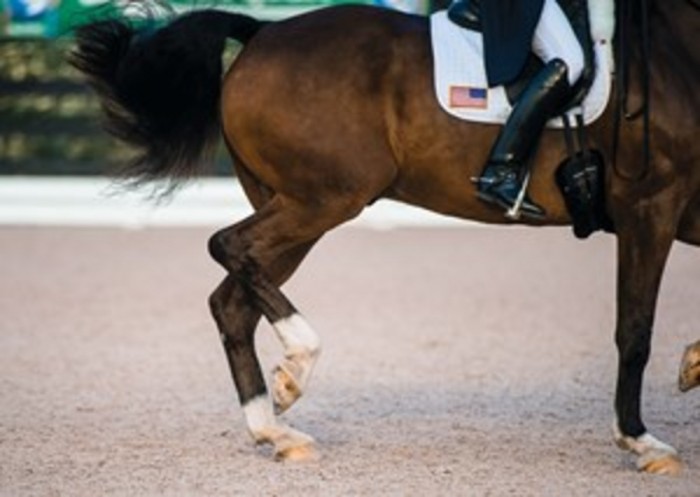
The effect of the standing hock angle on the joint
The angle of the hock is often discussed when assessing a horse’s conformation: sickle-hocked or straight-hocked horses are associated with lameness and hindlimb diseases. More research needed to be done concerning the effect of this angle on kinematics and kinetics of the horse. According to this study, a larger hock joint angle increases a horse’s chance of injury, and decreases their performance capacity.
This study measured the hock angle, ground reaction force, and kinematics of 16 horses. They used this information to calculate the energy generation and absorption in the joint. The horses were divided in three groups: small, intermediate and large hock angles.
Straight-hocked horses displayed less flexion during trot, generating less energy during push-off and absorbing less energy during the impact phase. This could have a negative impact on performance: their propulsive capacity may be limited, decreasing their jumping ability and their aptitude to perform the highly collected gaits. Intermediate hock angles seemed to optimise energy generation and promote gait quality by stimulating slower strides and thus, improving performance. Reduced energy absorption is linked to joint disease, increasing straight-hocked horses’ chance on these issues. On the plus side, smaller joint moment, linked to larger angles, seems to decrease the chance of plantar ligament desmitis.
Expert opinion by Charlotte De Bruyne
Because of the study design used, the results can only indicate relationships between hock angle and possible diseases, but it is impossible to identify this parameter as a definite cause of these diseases. Performance is determined by a number of factors, defining the extent to which conformation influences this, is infeasible.
> From: Gnagey et al., e Equine Vet J (2006) 628-633. All rights reserved to EVJ Ltd. Click here for the online summary.


